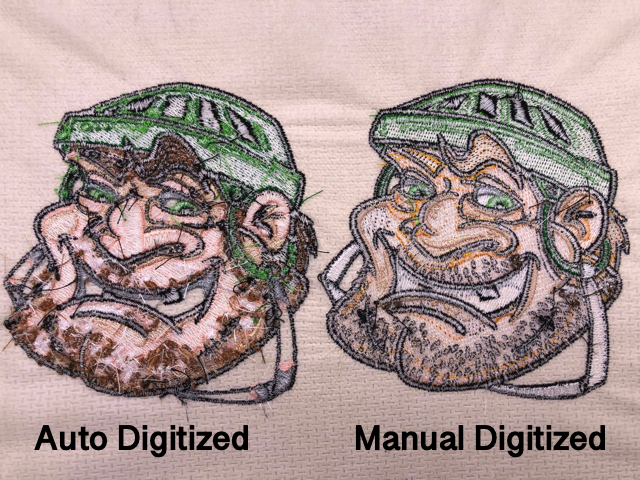Mastering the Needlework Digitizing Process: Your Ultimate Guide
Needlework digitizing is a thorough craft that calls for precision and know-how to convert intricate designs into digital styles for equipment needlework. As craftsmens get started on this trip to master the embroidery digitizing process, a detailed understanding of the fundamentals establishes the structure for quality.

Understanding Embroidery Digitizing Fundamentals
Embroidery digitizing essentials create the structure whereupon detailed layouts are converted right into machine-readable formats for precise stitching. This initial action in the needlework digitizing process is important for making certain that the last embroidered product is a faithful representation of the original style. Recognizing needlework digitizing essentials entails grasping vital concepts such as stitch kinds, sew instructions, thickness, rug, and pull payment.
Stitch types play an important function in figuring out the aesthetic and textural end result of the embroidered layout. By picking the appropriate stitch type, whether it be satin, fill, or running stitch, digitizers can attain the desired impact and enhance the overall quality of the needlework. Additionally, stitch instructions affects the flow and dimension of the design, while density identifies the spacing and coverage of the stitches.
Additionally, underlay stitching supplies stability to the style by protecting the fabric and stopping distortion during the needlework process. Draw payment is another essential factor to consider to neutralize the natural propensity of material to agreement when stitched. Mastering these needlework digitizing basics is basic for producing professional-quality stitched items.
Picking the Right Digitizing Software
Choosing the appropriate digitizing software program is a crucial choice that considerably influences the efficiency and top quality of the needlework digitizing process. Digitizing for Embroidery. When picking the right digitizing software, it is vital to take into consideration elements such as the intricacy of designs you intend to create, the user-friendliness of the software application, the degree of customer support used, and the compatibility with your embroidery equipment
There are various digitizing software program options offered on the market, ranging from standard programs for beginners to sophisticated software program for professional digitizers. Some prominent options consist of Wilcom EmbroideryStudio, Hatch Needlework Software, and PulseID. These software offer a vast array of devices and features to aid you create complex styles with ease.
Prior to choosing, it is suggested to explore the various software program choices with totally free trials or trials to establish which one ideal fits your needs. Additionally, reviewing evaluations and seeking recommendations from seasoned digitizers can supply useful insights right into the staminas and weaknesses of each software (Digitizing for Embroidery). By thoroughly evaluating your needs and contrasting the features of various digitizing software application, you can make an informed selection that improves your embroidery digitizing process
Digitizing Tools and Strategies

Optimizing Layout Settings for Embroidery
Understanding the details of style setups is essential in achieving optimum results in the needlework digitizing procedure, building upon the structure laid by recognizing digitizing more information devices and check my source methods. When optimizing layout settings for needlework, it is necessary to think about elements such as stitch kind, thickness, padding, pull settlement, and enrollment. Enrollment setups align various elements of the style accurately, maintaining overall style stability.

Troubleshooting Common Digitizing Issues
When running into common digitizing issues throughout the embroidery process, it is essential to recognize the source and carry out efficient solutions promptly. One usual trouble is stitch thickness problems, where stitches might be too thick, causing the material to tighten, or also sparse, causing voids in the design. Adjusting the stitch density setups in the digitizing software can help solve this concern.
Another frequent difficulty is string breaks throughout the needlework procedure. This can occur because of different factors such as wrong stress setups, dull needles, or using low-quality thread. Making sure appropriate upkeep of the needlework machine, including regular needle changes and tension modifications, can lessen the incident of string breaks.
In addition, layout enrollment mistakes can cause misaligned components within the needlework layout. Examining the layout placement in the digitizing software program and making essential changes prior to sewing can aid in preventing this problem. content By attending to these typical digitizing problems without delay and effectively, you can ensure a smoother embroidery procedure and high-quality finished items.
Verdict
Finally, understanding the needlework digitizing procedure needs a solid understanding of the basics, the right choice of software, and knowledge of tools and strategies. Maximizing style settings and troubleshooting usual digitizing concerns are critical actions in making sure top notch embroidery results. By following these steps diligently, one can attain accuracy and performance in the digitizing procedure.